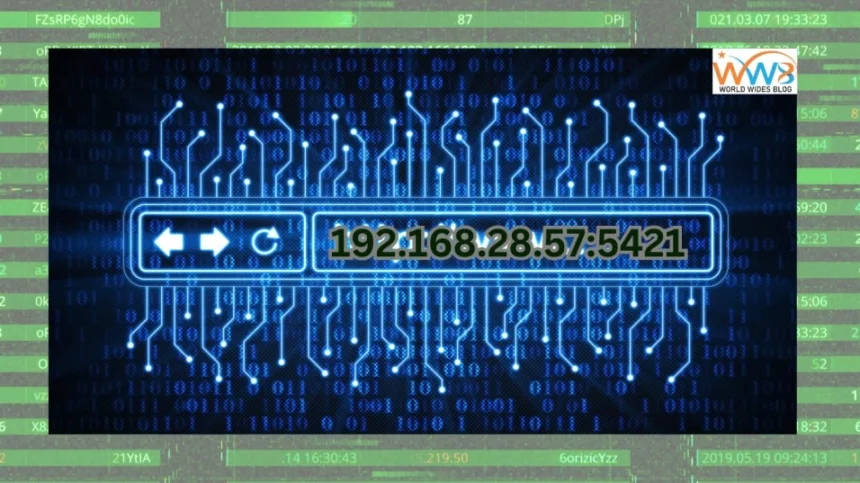Introduction to IP addresses 192.168.28.57:5421
Welcome to the world of IP addresses, where every device has its own unique identifier. If you’ve stumbled upon the address 192.168.28.57:5421, you might be wondering what it all means and why it’s significant in your digital landscape. Whether you’re a tech enthusiast or just someone trying to navigate their home network, understanding this combination can unlock many mysteries about how devices communicate online.
From distinguishing between public and private IP addresses to grasping the role of port numbers, there’s much more than meets the eye with 192.168.28.57:5421. Join us as we peel back the layers and dive into everything you need to know about this intriguing numerical sequence!
What is a public IP address?
A public IP address is your device’s identity on the internet. It’s how other devices and servers recognize yours when you connect online. This unique number allows data to flow to and from your device seamlessly.
Unlike private IP addresses, which are used within local networks, a public IP can be accessed from anywhere in the world. When you browse the web or stream videos, it’s this address that communicates with external servers.
Public IPs are assigned by Internet Service Providers (ISPs). Every time you connect to the internet, your ISP assigns one of these addresses for that session. It could change frequently unless you’ve opted for a static public IP.
Understanding its role helps clarify how information travels across networks and why security measures like firewalls are essential.
What is a private IP address?
A private IP address is a unique identifier assigned to devices within a local network. Unlike public IP addresses, which are accessible over the internet, private addresses operate solely within internal networks.
These addresses facilitate communication among devices connected to the same router or gateway. Common examples include 192.168.x.x, 10.x.x.x, and 172.16.x.x through 172.31.x.x ranges.
Because they aren’t visible on the internet, private IPs enhance security by keeping internal traffic contained. This setup prevents external entities from easily accessing your home or office network.
Devices like printers, computers, and smartphones often utilize these addresses for seamless interaction without exposing sensitive information online. The use of private IPs plays a crucial role in managing network resources efficiently while maintaining privacy for users connecting to shared networks.
The significance of the number 192.168.28.57:5421
The IP address 192.168.28.57:5421 holds specific importance within a network context. It belongs to the private range of addresses, typically used in local networks.
This particular address can represent a device on your home or office network, such as a printer or computer. Devices assigned private IPs can communicate with each other without direct exposure to the internet.
The additional component, “:5421”, indicates a port number. This detail is crucial for identifying which service or application is using that IP address for communication.
Port numbers allow multiple services to run simultaneously on one device without conflict. For instance, while your web browser might use another port, an online game could utilize 5421 for data transmission.
Understanding this combination empowers users and administrators alike to manage their networks effectively and troubleshoot connectivity issues when they arise.
Understanding the port number 5421
Port number 5421 serves a specific function in the realm of networking. Each port number acts as a communication endpoint for different applications running on devices.
This particular port is often associated with various services, especially those related to internal networks. When data packets are sent over the internet, they need both an IP address and a port number to reach their destination effectively.
Using 5421, systems can identify which application should handle incoming traffic. It’s like having multiple doors in your house; each door leads to a different room where activities happen.
Understanding this helps users troubleshoot connectivity issues or configure firewalls better. By knowing what happens at this port, you can enhance security measures or optimize performance accordingly.
How to locate your own IP address
Finding your own IP address is straightforward. Start with a simple search on your device.
For Windows users, open the Command Prompt. Type “ipconfig” and hit enter. This command reveals various network details, including your local IP address.
If you’re using a Mac, go to System Preferences. Select Network and choose the active connection. Your IP address will be displayed there.
Mobile users can find their IP by navigating to Settings. On Android, tap on About Phone, then Status; for iOS, select Wi-Fi in Settings and click on the connected network.
Alternatively, visit websites like WhatIsMyIP.com or simply search “What is my IP?” in any browser. These sites instantly display your public-facing IP address without any hassle.
Knowing how to locate this information empowers you when troubleshooting network issues or configuring devices at home.
Common misconceptions about IP addresses
Many people confuse IP addresses with physical locations. While an IP address can provide a rough idea of where a device is located, it doesn’t pinpoint an exact address.
Another common misconception is that all IP addresses are static. In reality, many users have dynamic IPs that change periodically, especially when using home networks or mobile data.
Some believe that private IP addresses can be accessed from the internet. However, these addresses are used only within local networks and remain hidden from public view.
It’s also misleading to think that having an IP gives complete anonymity online. Various tracking techniques can still identify user activity despite the obscurity provided by certain connections.
Some assume their ISP cannot track their activity via their IP address. This isn’t true; ISPs maintain access logs for various reasons including legal compliance and network management.
Conclusion
When delving into the world of IP addresses, understanding the specifics of an address like 192.168.28.57:5421 becomes essential for both tech enthusiasts and casual users alike. This particular address falls within a private range, primarily used for local networks.
The distinction between public and private IP addresses is crucial here, as it highlights different use cases and functionalities within networking environments. The significance of the number 192.168.28.57:5421 lies not only in its structure but also in how it connects devices to various services over a network.
Port numbers add another layer of complexity to this discussion, with port 5421 serving specific applications or services that require designated pathways for data transfer.
Locating your own IP address can be done using simple methods available through your device settings or online tools which help you navigate this digital landscape effectively.
Misconceptions about IP addresses abound; clarity on what these numbers represent ensures better security practices and understanding of personal privacy online.
Understanding all these elements helps demystify what might seem complicated at first glance while emphasizing the importance of managing connections in our increasingly connected world.







